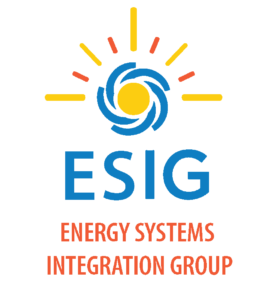Portal Link
CLICK HERE TO GO TO THE TOOLBOX
Overview
Recognizing the emergence of wind as a distributed generation application, ESIG organized a project to assess the impacts of wind generation on utility distribution networks. This project’s primary goal was the development of a set of engineering software application tools to aid utility distribution and planning engineers in analyzing wind generation at the distribution system level. It has also proved useful for distributed solar applications, since both are variable power sources and pose similar interconnection concerns.
The project resulted in a set of tools useful for analysis of distributed wind and solar applications, but a day of training was often required for most utility engineers to use them. ESIG decided that the next step should be a tool suite that can be used on-line with no formal training at all. To that end, ESIG solicited funding from APPA’s DEED program and CEATI to undertake a second phase effort, resulting in this DG Evaluation Toolbox.
Request Access
REQUEST ACCESS TO THE TOOLBOX – Please note that you must be an employee of a ESIG member organization or a funder of the development of this toolbox to have access.
The following resources are located in the toolbox:
FERC AND FLICKER SCREENING TOOL. Used to determine whether a proposed project meets the fast-track acceptance criteria under FERC Order No. 2006, which is similar to many state fast-track acceptance criteria. It evaluates both FERC and flicker criteria and provides an entry point into the Feeder Simulator and Economics Analysis tools.
FEEDER SIMULATOR. Simulates time variation of wind and solar power generation, and generator contributions to feeder fault currents.
ECONOMICS ANALYSIS. Includes wind site measurements and turbine power curve, capacity factor estimates, Clean Renewable Energy Bonds (CREB), Production Tax Credit (PTC), Renewable Energy Production Incentive (REPI), many other financing options, and sensitivity analysis.
WIND ENERGY FAQ DOCUMENT. Intended to help utilities and their customers decide whether wind power is a viable strategy or a good policy for their particular situation.
DISTRIBUTED WIND INTERCONNECTION GUIDE. Helps utilities specify wind turbine interconnection requirements, and identify areas of technical concern for safe and reliable operation.
DISTRIBUTED WIND MODELING GUIDE. Provides technical background and typical data on wind turbine dynamics, flicker, and power electronic interfaces for more detailed study by utilities or their consultants, using the UWIG Feeder Simulator.
TURBINE MONITORING REPORT. Provides flicker performance and capacity factor for two turbine types at three sites. This will provide a template for possible future monitoring of other turbine types.
Work is ongoing with the analytical tools to incorporate more wind turbines into the model library. In addition, the tools can analyze photovoltaic applications on distribution networks and appropriate solar case studies will be developed.
For more information, or to request access to the toolbox, send an e-mail to INFO@ESIG.ENERGY. Access is available to employees of ESIG member organizations as well as APPA DEED members and participants in CEATI’s Distribution Assets Life Cycle Management Interest Group (DALCM).
